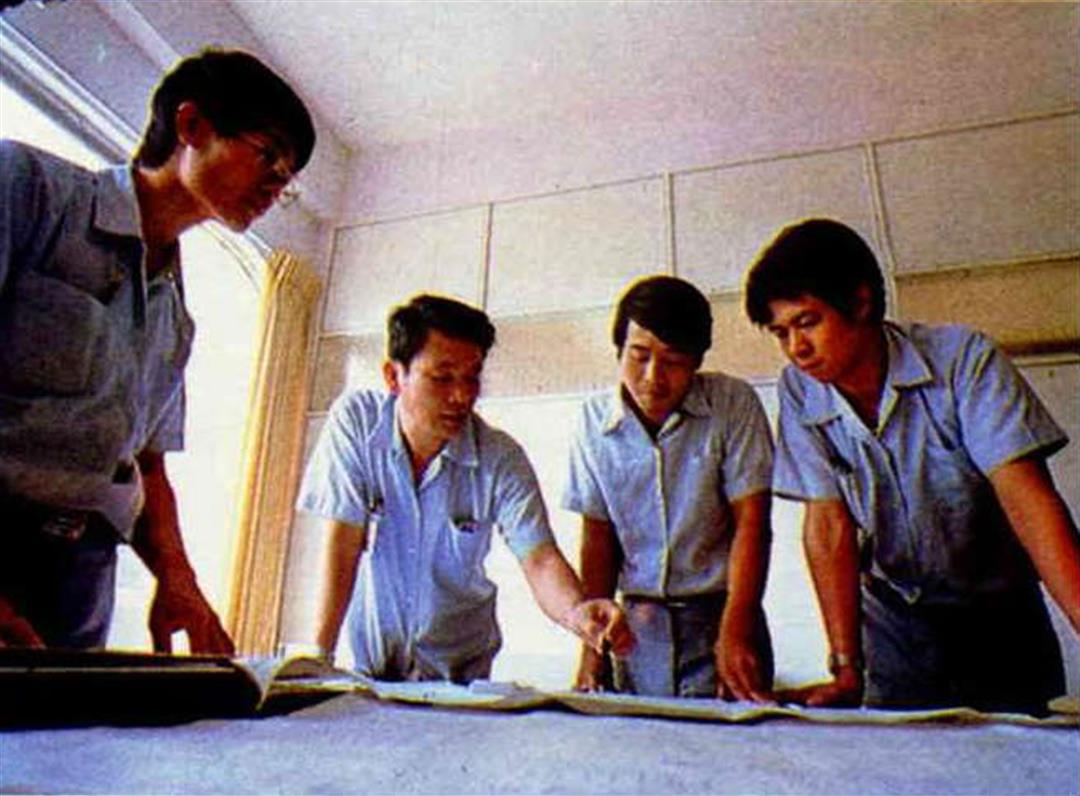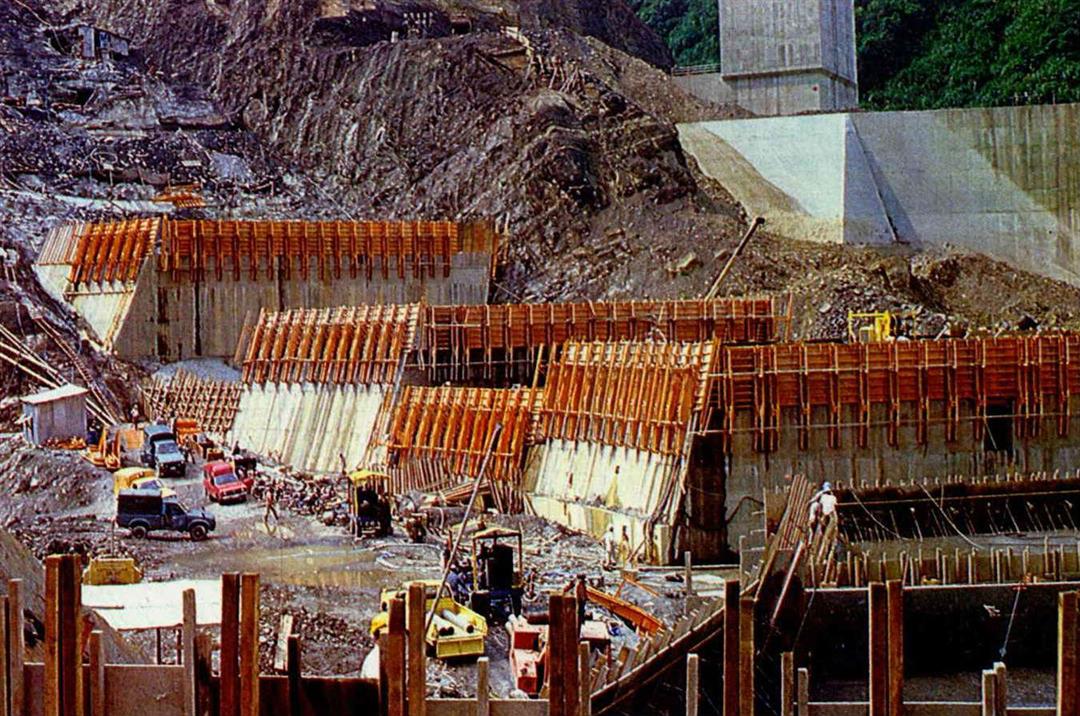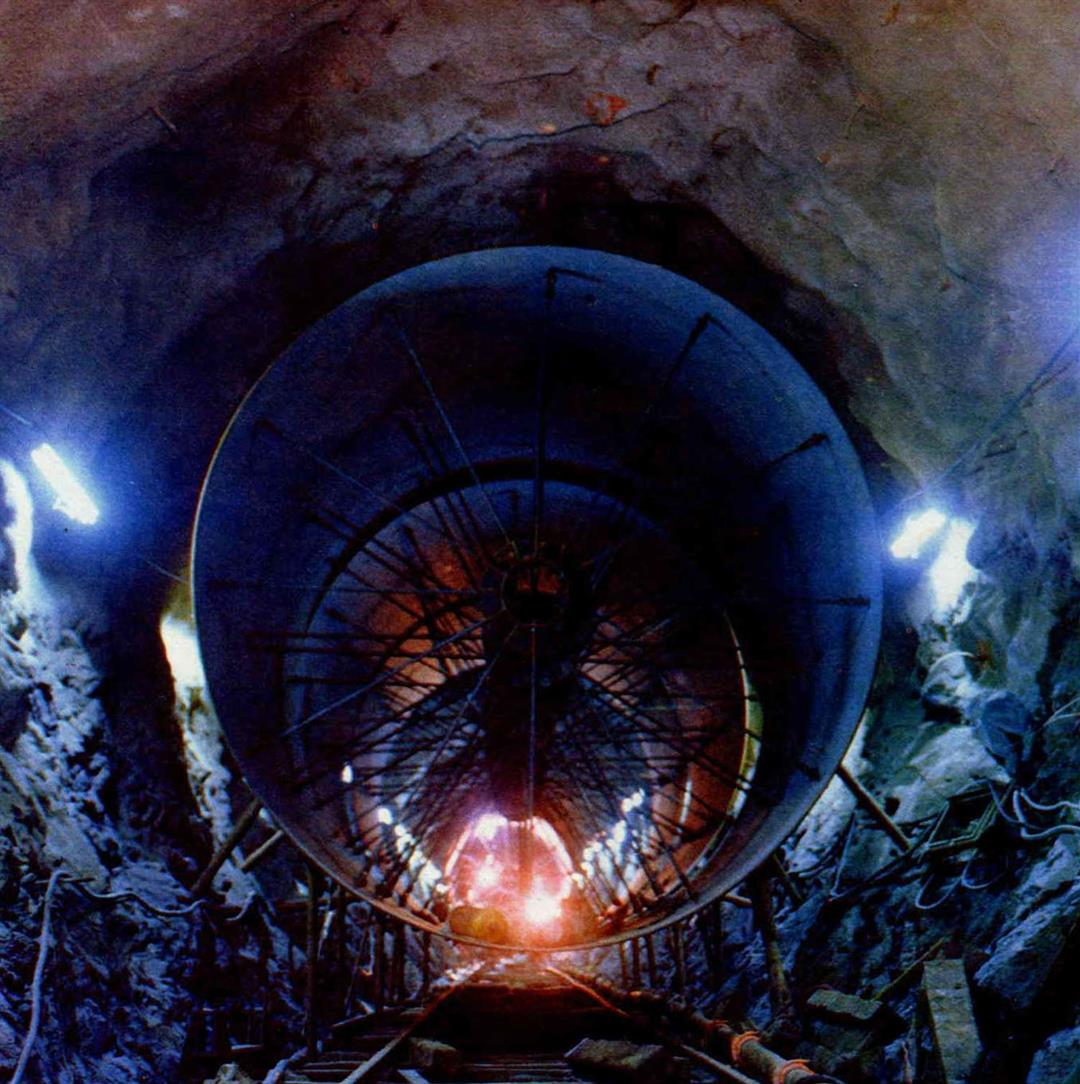Construction on the long-awaited Feitsui reservoir and dam is now 40 percent complete, and the dam should begin storing water before the end of this year. By next summer, the people of greater Taipei will at long last bid farewell to the water shortages that have loomed every summer in recent years.
In 1979, to solve the water supply problems of Taipei's three million-plus residents, the city began the NT$10 billion (US$2.5 million) project on a tributary of Hsintien Creek, some thirty kilometers south of Taipei.
The city charged Sino Tech Consultants, Inc. with assuring the dam's durability against natural and man-made problems. Sino Tech's engineers chose a double-curvature arch shape as the design, offering both the greatest economy and greatest resistance to earthquakes, floods, air raids, etc. Feitsui is designed to withstand a major quake--7.1 on the Richter scale. Its resistance to overpressure is almost twice that of the strongest dam in Japan (0.46 versus 0.25G). As a bonus, while flood prevention is not the dam's prime function, it will have the effect of reducing flood severity in the area.
Feitsui's water storage capacity will reach about 406 million cubic meters, and its pumping system will be capable of delivering 3.45 million tons of water per day. Present plans call for use of the reservoir through the year 2030.
After receiving the Sino Tech research report, the national government's Council for Economic Planning and Development invited experts from the United States Interior Department's Bureau of Reclamation to inspect the work and comment on the design. The U.S. consultants' report fully confirmed the soundness of Sino Tech's projections.
Feitsui's design is state of the art--comparable to the best major dams around the world. Although it is much smaller than most, its technology is second to none.
"Above all," states the Reservoir Development Commission's chief executive, Hsieh I-hsiung, "the most comforting aspect is the end of our past dependence on foreign assistance for dam construction. Feitsui's design, supervision, and construction are entirely the work of our own people. Taipower is responsible for engineering; Sino Tech consultants and the Retired Servicemen's Engineering Agency share the burden for design and construction. Now we, with our own hands and brains, are building a 'Great Wall' for water."
The reservoir dam is to be 122 meters tall, about the height of a 40-story building, and will consume 750,000 tons of concrete. The reservoir catchment area encompasses 303 square kilometers.
In the building of the dam, the so-called bedding seam technique was of special importance. Since big dams encounter very high pressure from the water they trap, any soft rock layers underneath and to their sides can change shape, causing leakage or worse; hence, soft materials must be eliminated from these areas. Such unwanted matter is removed, and the strongest concrete is used to refill the excavation, making these load-bearing footings solid and secure.
Foreign dam builders, under like conditions, usually dig by conventional methods to a depth of two or three meters then fill the cavities thus formed with concrete. Feitsui employed a brand new technique, making use of high-pressure "water knives" and "water drills" invented by Taiwan scientists to clean out unwanted matter. At Feitsui, workers bored a tunnel between holes made by the water drills, a task requiring the full efforts of their cement-covered bodies for ten hours at a time under adverse weather conditions. When heavy rains fell in the work area, almost completely submerging it, it became difficult even to walk.
Taiwan has fifty-odd dams which serve the nation in connection with water supply, hydroelectric power, and flood control. Most of them face severe silt problems, according to Hsieh I-hsiung: "Taiwan's silt accumulation involves both human and natural factors. In this project, we are building in protective aspects. We have already constructed a soil runoff protection system in the farm land area of the catchment basin. This system incorporates concrete block barriers, water wells, and reinforced concrete pipes; together, it can hold back 30,000 tons of silt. We are also reforesting some areas and building smaller embankments where needed to check erosion."
Feitsui is aimed at resource conservation as well as city water supply, and is shaping up as a net ecological asset to the Taipei area, a model for construction projects of future years.
[Picture Caption]
Feitsui Reservoir, surrounded by mountains and valleys, is now almost 40 percent complete, and should begin storing water by the end of this year; construction is to be completed by 1987.
1. Under the blue sky, the construction looks magnificent. 2. Here is shown a depiction of the completed dam. 3. The nation's best engineers and water-conservancy specialists are discussing the construction details.
1. A view of the construction site. 2. Laying the concrete as seen from a distance. 3. The material used in the construction is transported in by conveyor belt. 4. Electrical wiring and pressure-resistant pipes being installed in a tunnel. 5. Wushe reservoir has a gravity dam with a linear shape and thick base. 6. Atop the dam is a water outlet to relieve flooding. 7. Tsengwen Dam, made of earth and stone, can store 700 million tons of water, the most of any dam in the country.
The arc-shaped Tehchi Dam, solidly reinforced on both sides, shows similarity to Feitsui Dam.

1. Under the blue sky, the construction looks magnificent.

2. Here is shown a depiction of the completed dam.

3. The nation's best engineers and water-conservancy specialists are discussing the construction details.

1. A view of the construction site.

2. Laying the concrete as seen from a distance.

3. The material used in the construction is transported in by conveyor belt.

4. Electrical wiring and pressure-resistant pipes being installed in a tunnel.

5. Wushe reservoir has a gravity dam with a linear shape and thick base.

6. Atop the dam is a water outlet to relieve flooding.

7. Tsengwen Dam, made of earth and stone, can store 700 million tons of water, the most of any dam in the country.

The arc-shaped Tehchi Dam, solidly reinforced on both sides, shows similarity to Feitsui Dam.